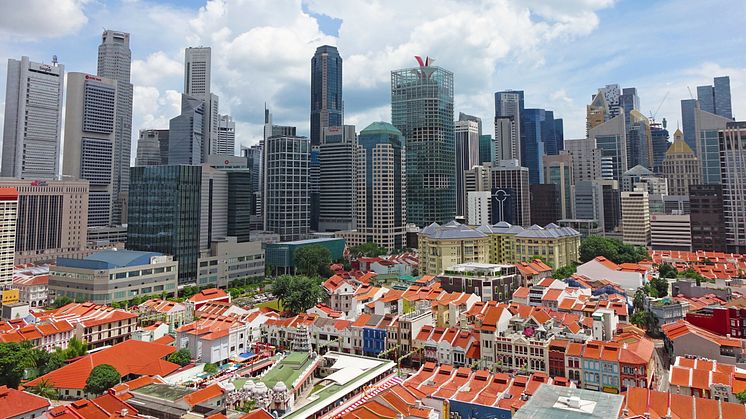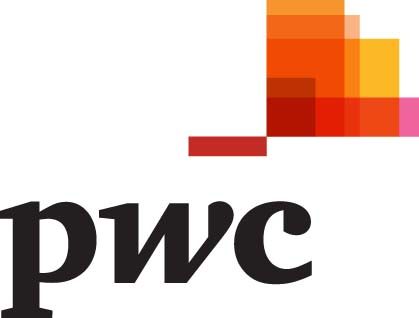
Press release -
Singapore named as hot investment destination because of improvement in city-state's office market, says emerging trends in real estate Asia Pacific 2019
SINGAPORE (November 28, 2018) – Singapore is ranked as second top real estate investment market in Asia Pacific as the city-state continues to rebound from cyclical lows of a couple years ago, according to the Emerging Trends in Real Estate Asia Pacific® 2019, a real estate forecast jointly published by the Urban Land Institute (ULI) and PwC. Office rents have been rising strongly due to a lack of supply and a revival in tenant demand. Co-working and other flexible office space operators have become amongst the biggest lessors of office space, while tech firms have also been active in the market.
The report also shows that the residential market in Singapore continues to be resilient, despite cooling measures in place for several years. Meanwhile, solid economic growth and high visitor numbers have supported rents and yields for prime retail space in 2018, following years of poor performance as Singapore landlords struggle to adapt to new models of retailing. Meanwhile, the logistics market remains plagued by oversupply. This has suppressed rents, although there are signs excess space is now being taken up, with rents are predicted to improve slightly in 2019.
Looking at the Asia Pacific region as a whole, ongoing competition among investors to place capital is continuing to shape how investors approach the sourcing of assets, despite signs the market may now be approaching a cyclical top. In particular, value-add plays continue to be a focus, as owners look to upgrade assets by providing more flexibility, better user experience, and improvements leveraging design and technology functions. As a result, investors today say they are likely to be more site specific, working from the ground up rather than the top down.
Among the trends in the Asia Pacific region that the report cites are:
- Logistics facilities continue to be a go-to investment: The only sector where investor opinions were uniformly bullish, investment allocations to the sector have risen significantly in 2018.
- Co-living as a template for future housing: As cities are becoming denser and housing costs rise, more developers are looking to co-living as a way to pack more people into smaller areas.
- Capital flows remain strong: The ongoing buildup of liquidity across the Asia Pacific region continues to see huge amounts of money being sent cross-border to be invested in foreign real estate assets. Strong outflows in the region seem certain to continue, especially with new reserves from Japan likely to enter the mix in 2019.
“Singapore has climbed from third to second place in this year’s rankings,” Pauline Oh, ULI Singapore Executive Director. “The improvement in Singapore’s office market has seen the city-state comprehensively rerated by respondents, after falling to 21st place in our 2017 report. This can be demonstrated by a number of major office deals that have been sealed in the past 12 months, with domestic investors the biggest buyers.”
Yeow Chee Keong, Real Estate & Hospitality Leader at PwC Singapore added, “Singapore’s stronger performance this year is reflective of the rebound we are seeing over cyclical lows over the past number of years. Its pro-business environment and the growth in crowd data also has placed the republic as one of the more attractive markets for data centres; an alternative asset class with higher yields.”
The Emerging Trends report, which is being released at a series of events across Asia over the next several weeks, provides an outlook on Asia Pacific real estate investment and development trends, real estate finance and capital markets, and trends by property sector and metropolitan area. It is based on the opinions of 350 real estate professionals, including investors, developers, property company representatives, lenders, brokers and consultants.
The top five markets for investment and development in 2019:
- •Melbourne (first in investment, first in development) – Melbourne has just managed to best Sydney this year. It offers a constrained office supply pipeline, a good yield spread over the cost of debt and sovereign bonds, a deep, liquid, core market and good prospects for rental growth.
- •Singapore (second in investment, eighth in development) – An improvement in Singapore’s office market has caused the city to take second spot in investment rankings, as it continues to rebound from cyclical lows.
- •Sydney (Third in investment, third in development) – Sydney remains near the top of the rankings for the same reasons as Melbourne. The city is a favourite of global investors due to relatively high returns and as a safe-haven play. Competition for assets has helped sustain pricing, while low vacancies and growing demand for space suggest rents will continue to rise.
- •Tokyo (fourth in investment, fourth in development) – Tokyo's move to fourth this year is somewhat surprising after last year’s drop, but probably reflects what has always made it a favourite for institutional buyers: cheap finance, attractive leverage, a good spread over interest rates, and a large stock of investment-grade assets.
- •Osaka (fifth in investment, sixth in development) – The lack of reasonably priced core assets in Tokyo continues to push investors into regional Japan, where local economies are now increasingly mature and stable. With supply tight in both residential and office sectors, the city is now probably the top market outside the capital.
Leading buy/hold/sell ratings for the various asset classes are as follows:
Office — buy Ho Chi Minh City and Tokyo, sell Taipei and Auckland.
Residential — buy Ho Chi Minh City and Bangalore, sell Kuala Lumpur and Auckland.
Retail — buy Ho Chi Min City and Mumbai, sell Taipei and Kuala Lumpur.
Industrial/distribution — buy Bangalore and Mumbai, sell Taipei and Kuala Lumpur.
Hotels – buy Tokyo and Ho Chi Minh City, sell Taipei and Beijing.
The full report is available here.
About the Urban Land Institute
The Urban Land Institute is a nonprofit education and research institute supported by its members. Its mission is to provide leadership in the responsible use of land and in creating and sustaining thriving communities worldwide. Established in 1936, the institute has more than 42,000 members worldwide representing all aspects of land use and development disciplines, including more than 2,000 in the Asia Pacific Region. For more information, please visit uli.org or follow us on Twitter, Facebook, LinkedIn, and Instagram. For more information on ULI Asia Pacific, visit asia.uli.org or follow us on Twitter.
Topics
Categories
About PwC
At PwC, our purpose is to build trust in society and solve important problems. We’re a network of firms in 158 countries with more than 236,000 people who are committed to delivering quality in assurance, advisory and tax services. Find out more and tell us what matters to you by visiting us at www.pwc.com.
PwC refers to the PwC network and/or one or more of its member firms, each of which is a separate legal entity. Please see www.pwc.com/structure for further details.
© 2018 PwC. All rights reserved



